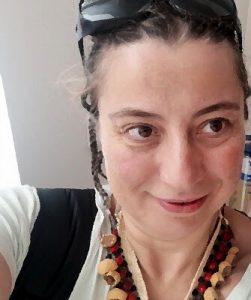Panel Discussion
Why does situatedness matter in exploring the dynamic relationship between art and information technology?
Focus of the Panel Session
Although the concept of situatedness originated in feminist studies, it has since been widely adopted in the field of information technology. From Lucy Suchman’s groundbreaking work on the material and social circumstances of human–computer interaction to William J. Clancey’s situated approach to knowledge representation, the idea that the human mind is ontologically and functionally intertwined with environmental, social, and cultural factors has become broadly accepted.
However, aside from notable exceptions such as media artist Simon Penny, the significance of situatedness for the production and presentation of art—particularly in relation to information technology—remains underexplored. In this area, dominant practices continue to be defined by studio-based creation and white-cube exhibition formats.
This panel invites participants with backgrounds in interactive art, social computing, UX design and locative media games to highlight the rich tradition of situated approaches within information technology and to discuss their relevance to the ArtsIT community.
Panel Chair
 Michel van Dartel
Michel van Dartel
Centre of Applied Research for Art, Design and Technology, Avans University of Applied Sciences, Netherlands
Bio:
Michel van Dartel (b.1976) is tenured Research Professor of Situated Art, Design and Technology at the Avans Centre of Applied Research for Art, Design and Technology (CARADT). He holds an MSc in cognitive psychology and a PhD in artificial intelligence, both from Maastricht University, and was affiliated with V2_Lab for the Unstable Media between 2005 and 2024. Alongside his work at CARADT, Van Dartel also acts as an independent curator and freelance advisor to art and design academies, presentation platforms, funding and governmental bodies.
Panel Speakers
 Elizabeth Churchill
Elizabeth Churchill
Dept Chair and Professor of Human Computer Interaction,
MBZUAI – Mohamed bin Zayed University of Artificial Intelligence, UAE
Bio:
Dr. Elizabeth F. Churchill is a recognized pioneer and global leader in Human-Computer Interaction (HCI) and Social Computing.
An Association for Computing Machinery (ACM) Fellow and former Vice President of both the ACM and ACM’s Special Interest Group on Human Computer Interaction (SIGCHI), she has consistently built bridges between abstract social science theory and large-scale commercial innovation. She is renowned for translating insights from psychology, cognitive science and work practice studies into actionable design principles for consumer and designer/developer products and platforms.
 Eirini (Irene) Mavrommati
Eirini (Irene) Mavrommati
Edwin van der Heide 
Vanessa Cesário
University of Madeira, Interactive Technologies Institute (ITI/LARSyS), Portugal
Bio:
Professor Vanessa Cesário is a specialist in Digital Media, with a strong academic background in communication and culture. She holds a PhD in Digital Media and completed a postdoctoral research project in Human-Computer Interaction (HCI) applied to Cultural Heritage. She stands out for her ability to bridge theoretical knowledge with practical skills, preparing students for a constantly evolving communication landscape.
Her research focuses on HCI in cultural heritage contexts, particularly on how people engage with digital technologies—such as mobile applications, interactive exhibitions, and multimedia content (images, sound, and text). She explores participatory communication and design approaches as strategies to preserve and promote heritage through digital media. As a member of the Interactive Technologies Institute (ITI/LARSyS), she collaborates on international projects and actively contributes to scientific progress in her areas of expertise.
With a trajectory in the fields of Communication, HCI, and Cultural Heritage, Professor Vanessa Cesário encourages students to explore purposeful digital narratives, using digital tools critically and creatively.
In 2021, her doctoral thesis was awarded the distinction “Cum Laude” by the University of Porto. In 2024, she received the “Excellent Teaching Award” award from Instituto Superior Técnico, University of Lisbon. In 2025, she was featured in the book “Women in Science”, an initiative by Ciência Viva that celebrates the contributions of women to scientific advancement in Portugal.


